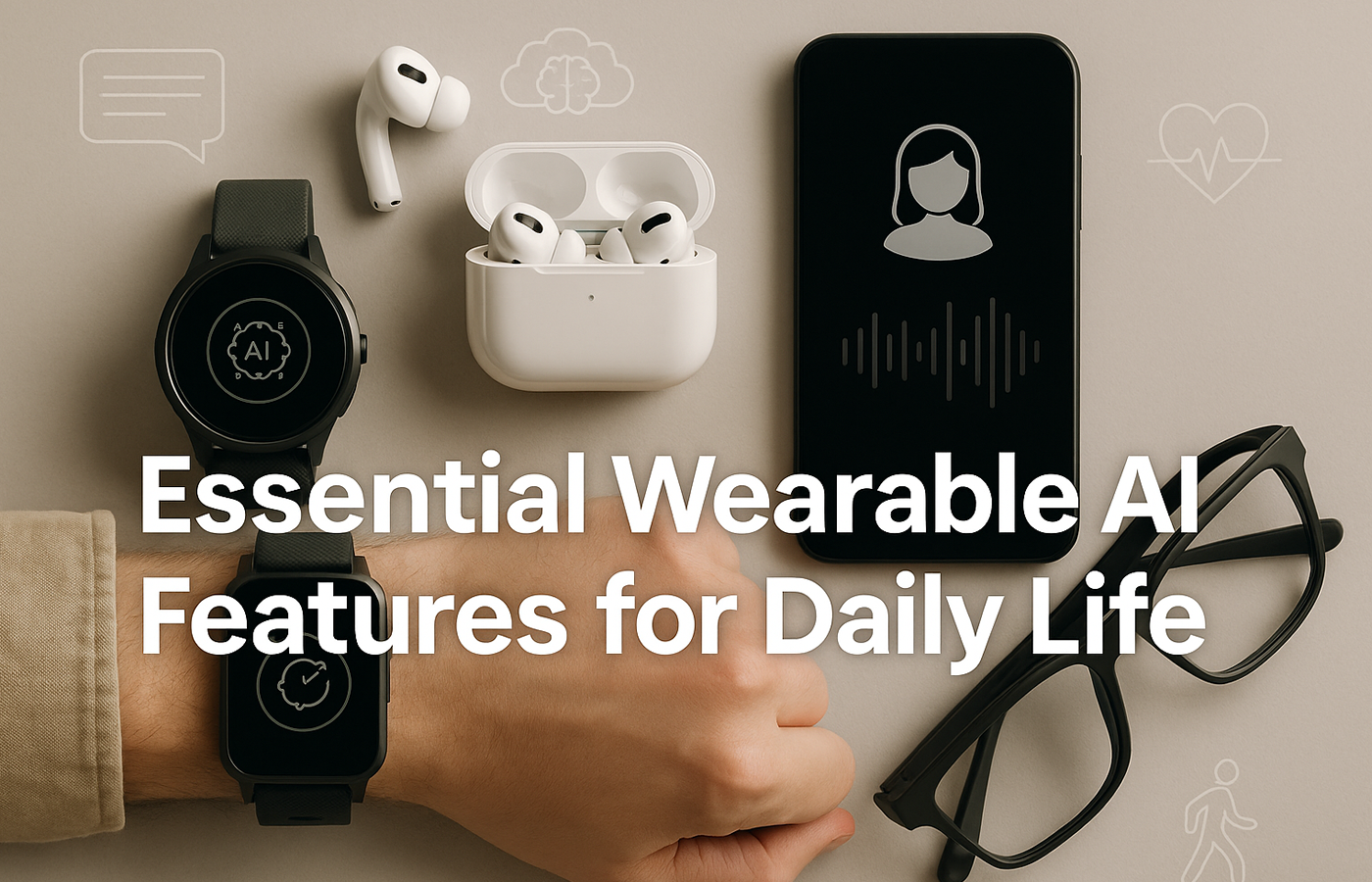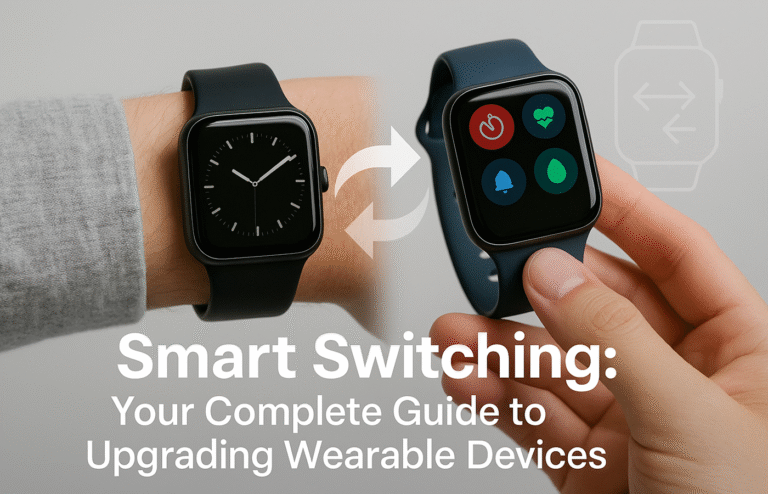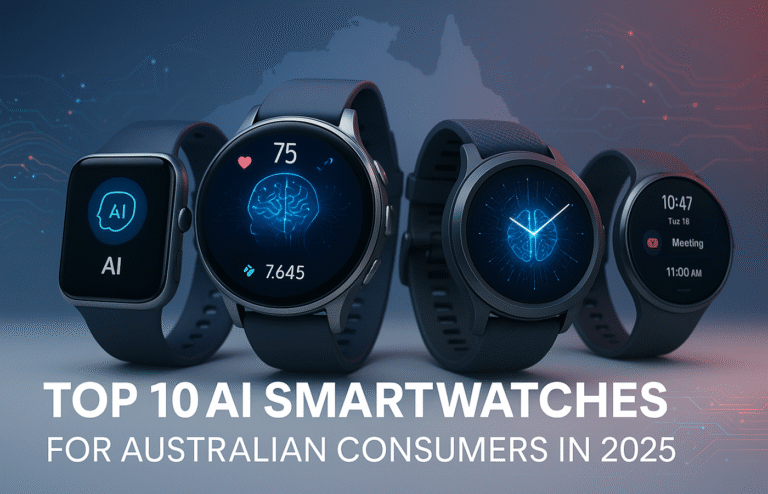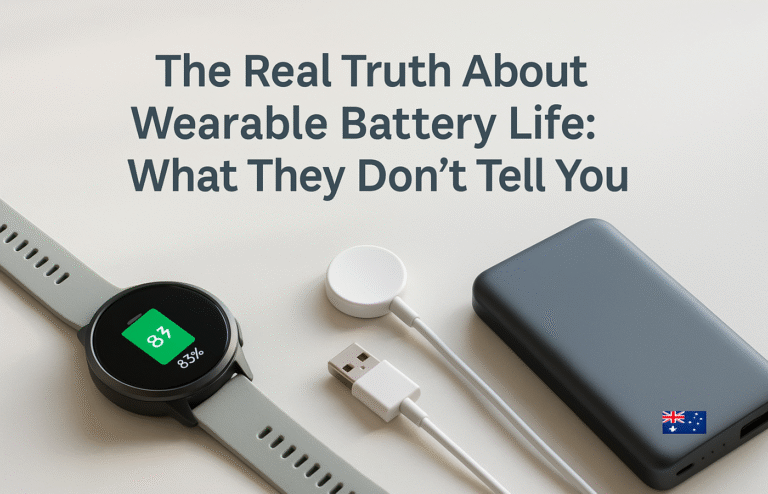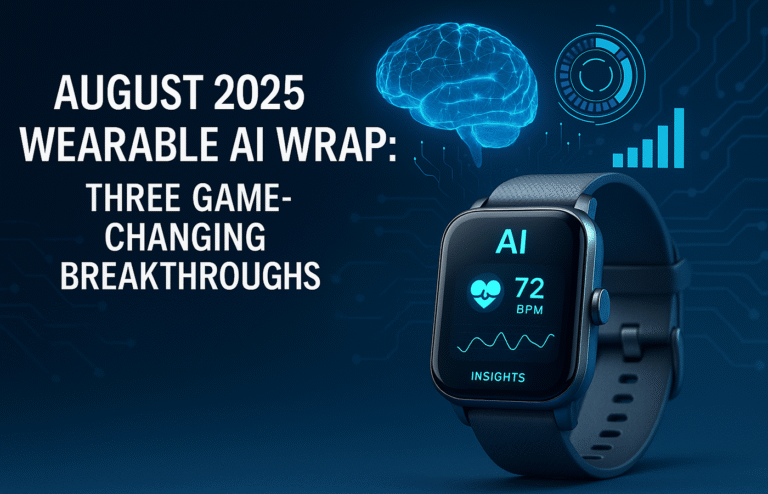Cut Through the Hype: The Wearable AI Features That Actually Change Your Day
Modern wearable AI delivers practical functionality beyond marketing promises, focusing on features that genuinely improve daily routines rather than impressive but impractical technology.
Essential AI Features:
● Smart health monitoring with continuous background analysis and personalised insights
● Battery intelligence that learns usage patterns and prioritises critical functions
● Contextual notifications filtering based on stress levels, location, and calendar appointments
● Voice control with natural language processing and hands-free operation
Advanced Capabilities:
● Predictive analytics anticipating health issues and optimal timing recommendations
● Seamless device integration creating cohesive digital ecosystems
● Adaptive user interfaces that evolve with personal preferences and usage patterns
Privacy and Durability:
● On-device AI processing keeping sensitive health data local and secure
● Real-world durability with smart diagnostics and predictive maintenance alerts
Selection Strategy: Focus on solving actual daily problems rather than pursuing cutting-edge features without practical application.
Cut Through the Hype: The Wearable AI Features That Actually Change Your Day
The wearable AI market is exploding with promises that sound straight out of science fiction. However, beneath the marketing buzz lies a simple truth: not every feature will transform your daily routine. As someone who’s tested many wearable AI devices across various settings, I’ve learned to separate the genuinely useful from the merely impressive.
Understanding which features deliver real value helps you make smarter purchasing decisions and avoid buyer’s remorse. Moreover, focusing on practical functionality ensures your wearable AI investment actually improves your life rather than becoming another gadget collecting dust in your drawer.
Smart Health Monitoring: Beyond Basic Step Counting
Traditional fitness trackers count steps and measure heart rate, but modern wearable AI takes health monitoring to an entirely new level. Advanced sensors now detect irregular heart rhythms, monitor blood oxygen levels, and even track stress patterns throughout your day. Furthermore, machine learning algorithms analyse these metrics to provide personalised health insights rather than generic recommendations.
The real game-changer lies in continuous monitoring capabilities that work seamlessly in the background. For instance, many healthcare workers rely on devices that automatically detect when they’re washing their hands or remind them to take breaks during long shifts. Consequently, these features promote better health habits without requiring conscious effort or constant attention.
Battery Intelligence: Making Power Management Actually Work
Battery life remains the biggest frustration with wearable technology, but AI-powered energy management is finally addressing this challenge. Smart power algorithms learn your usage patterns and automatically adjust performance to extend battery life when you need it most. Additionally, predictive charging recommendations help you maintain optimal battery health over time.
Modern wearable AI devices also prioritise essential functions during low battery situations. Rather than shutting down completely, they’ll maintain critical health monitoring while temporarily disabling less important features. This intelligent power management means your device stays functional during those crucial 12-hour shifts when charging isn’t an option.
Contextual Notifications: Filtering What Actually Matters
Notification overload has become a real problem in our hyperconnected world, but wearable AI offers a sophisticated solution. Machine learning algorithms analyse your behaviour patterns to determine which notifications deserve immediate attention versus those that can wait. Moreover, contextual awareness allows your device to understand when you’re in meetings, sleeping, or focused on important tasks.
Smart filtering goes beyond simple scheduling rules by considering factors like your location, calendar appointments, and even your stress levels. For example, your wearable might suppress non-urgent notifications during high-stress periods while ensuring emergency calls always come through. This intelligent approach helps maintain productivity while keeping you connected to what truly matters.
Voice Control That Actually Understands You
Early voice assistants on wearables were more frustrating than helpful, but AI-powered speech recognition has dramatically improved. Modern devices understand natural language commands and adapt to your speaking patterns, accent, and even the background noise in your environment. Furthermore, on-device processing ensures voice commands work reliably without requiring a constant internet connection.
The practical applications extend far beyond simple queries. Healthcare workers can now dictate patient notes, set medication reminders, or request specific information hands-free while maintaining sterile conditions. Additionally, improved natural language processing means you can speak conversationally rather than memorising specific command phrases.
Predictive Analytics: Your Personal Crystal Ball
Perhaps the most impressive advancement in wearable AI involves predictive capabilities that anticipate your needs before you realise them yourself. By analysing patterns in your health data, sleep cycles, and daily activities, these devices can predict potential health issues, optimal workout times, and even when you’re likely to feel stressed.
These predictions translate into actionable recommendations that genuinely improve your daily experience. For instance, your wearable might suggest taking a short walk before a stressful meeting or recommend adjusting your bedtime based on tomorrow’s schedule. Consequently, you can make proactive decisions rather than simply reacting to problems after they occur.
Seamless Device Integration: Creating Your Personal Ecosystem
The most valuable wearable AI features work harmoniously with your existing technology rather than operating in isolation. Smart integration allows your wearable to communicate with your smartphone, smart home devices, and even workplace systems to create a cohesive digital ecosystem. Moreover, this connectivity enables more sophisticated automation and personalisation across all your devices.
Real-world integration benefits include automatic calendar syncing, smart home adjustments based on your location and biometrics, and seamless data sharing with healthcare providers. Additionally, cross-device learning means insights gained from your wearable can improve recommendations and automation across your entire technology ecosystem.
Adaptive User Interfaces: Technology That Learns Your Preferences
Static interfaces quickly become frustrating, but adaptive AI creates personalised experiences that evolve with your needs. Machine learning algorithms observe how you interact with your device and automatically adjust menu layouts, shortcuts, and display preferences accordingly. Furthermore, contextual interfaces change based on your current activity, location, and time of day.
This adaptability extends to accessibility features that accommodate different abilities and preferences. For example, your wearable might automatically increase text size in low-light conditions or switch to vibration alerts in noisy environments. As a result, the device becomes more intuitive and efficient the longer you use it.
Privacy-First AI: Keeping Your Data Secure
With increasing awareness about data privacy, the most valuable wearable AI features prioritise on-device processing over cloud-based analytics. Local AI processing means your sensitive health data never leaves your device, providing both faster responses and enhanced privacy protection. Additionally, advanced encryption ensures that any data transmission remains secure and anonymous.
Smart privacy controls allow you to granularly manage what information gets shared and with whom. Modern wearables let you keep fitness data local while sharing only anonymised insights with researchers or healthcare providers. Consequently, you maintain control over your personal information while still benefiting from AI-powered features and recommendations.
Real-World Durability: Features That Work When It Matters
The most sophisticated AI features become worthless if your device can’t withstand real-world conditions. Advanced wearables now combine ruggedisation with smart functionality, ensuring critical features remain accessible even in challenging environments. Moreover, AI-powered diagnostics can detect potential hardware issues before they cause complete device failure.
Water resistance, drop protection, and temperature tolerance have become standard, but AI enhancement takes durability further. For instance, smart sensors can detect when your device has been compromised and automatically adjust functionality to prevent data loss. Additionally, predictive maintenance alerts help you address potential issues before they impact device performance during critical moments.
Making the Right Choice: Focus on Your Actual Needs
Ultimately, the best wearable AI features are those that solve real problems in your daily life rather than simply showcasing impressive technology. Before purchasing any device, honestly assess which features will genuinely improve your routine versus those that sound exciting but lack practical application. Furthermore, consider how these features integrate with your existing lifestyle and technology ecosystem.
Start by identifying your primary pain points – whether that’s medication reminders, fitness motivation, or workplace efficiency – then seek devices that address these specific needs. Remember that a device with fewer features that work exceptionally well often provides better value than one packed with mediocre implementations of cutting-edge technology.

